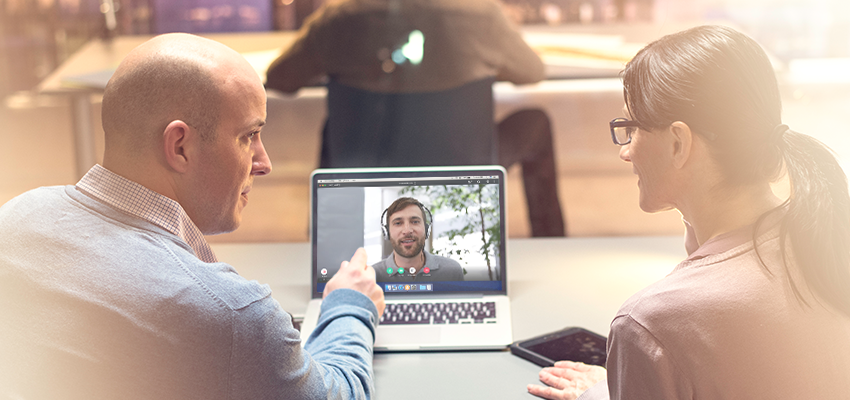If they haven’t already hit your inbox, the “return to office” announcements are coming. Either dreaded or welcomed, many employees around the world are preparing for another seismic shift—a shift back to some sense of normalcy. But after more than a year of social distancing, abandoned workstations, and vacant office buildings, what even is normal? How are companies moving forward after the great work-from-home experiment? The abrupt full-time return to office expectation doesn’t reflect our learnings or any sense of balance. Instead, companies like REI, Facebook, Shopify and our own CEO have announced steps toward making flexible work the new norm.
Whether companies continue to work fully remote or choose a hybrid path, they will have the opportunity to look at the office in a brand-new way. Most of us have learned over the past 15 months that the “butts in seats” model of productivity is obsolete. The question becomes, how will the office of the future enable a flexible and productive workforce? While many workers look forward to returning, most agree that we have greatly benefitted from a remote environment. We miss our colleagues, but we don’t miss the commute. So let’s get the best of both. The future is trending towards a hybrid-model office.
We decided earlier this year to formally put our remote-centric strategy to the test. We’ll draw on everything we learned during the pandemic to continue doing our best work, from anywhere, and leaving the choice of where, up to our people. This is new to all of us. We don’t pretend to know all the answers. As our office spaces around the globe begin to reopen, we’ll continue to adapt and learn how to achieve a successful, hybrid, remote-centric experience.
So how do modern companies reap the benefits of a remote-centric solution and make hybrid happen? The old office was like school with assigned desks and set hours. Tomorrow’s office is about engagement, freedom and flexibility. It’s about prioritizing team building, training, collaboration and well-being and building connections to prevent burnout.
To pull this off, we need to reimagine how we do things. It sounds simple, but to plan for the future of LogMeIn’s spaces, I started by talking to leaders and employees about their needs. Those needs varied around the globe depending on team size and location and some teams weren’t quite sure how work would change. Overall, we adopted a test, learn, and refine approach—because we know innovation takes time. To start, LogMeIn focused on the following workplace tenets before developing our hybrid strategies.
- Collaboration: Shifting to a dynamic environment that prioritizes interaction
- Flexibility: Designing a unique office experience based on needs while retaining a remote-centric environment
- Test & Experience: Learning and modifying our workplace of the future
- Willingness to Change: Adapting as we learn how employees use the space
- Inclusive: Incorporating remote employees in new ways
When you walk into a modern remote-centric workspace, it should promote connection. We’re beginning with bookable and flexible seating that will allow employees to easily coordinate with colleagues and have the freedom to move throughout the work environment. Huddle spaces and unique twists on the traditional conference room will provide tools for teamwork— for those inside and outside of the physical office.
The goal is to promote not only a flexible but also an equitable work environment. That means providing an engaging and inclusive experience for fully remote employees who do not have a local office to pop into. This might mean using our collaboration budget to bring employees together at one of our hubs, or utilizing coworking spaces for team meetings in areas where we have smaller pockets of employees. An “office” is just a piece of the puzzle—employees might meet at the park. Many of these innovative ideas came directly from our own staff. Sometimes all you have to do is ask. We need to think of hybrid work as being inclusive, not isolating. It’s going to take a full commitment to a remote-centric approach.
The future of work is now and it’s up to us to build what that future looks like. We believe that if we invest in our employees and both the remote and in-person experiences they have at work, hybrid work will not only be an option, but productive and preferable for the modern workforce.
To read more about building a work from anywhere strategy, check out the Forrester Consulting research study commissioned by LogMeIn.
